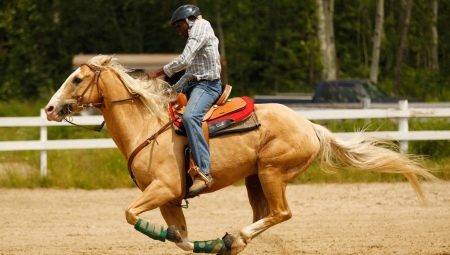Riding always requires maximum concentration and certain skills from the rider, especially when it comes to such a gait (riding method) as a gallop. It is he who is the fastest and most convenient way to ride a horse. However, the gallop has not only its unique properties, but also certain varieties. It is about them that we will talk below.
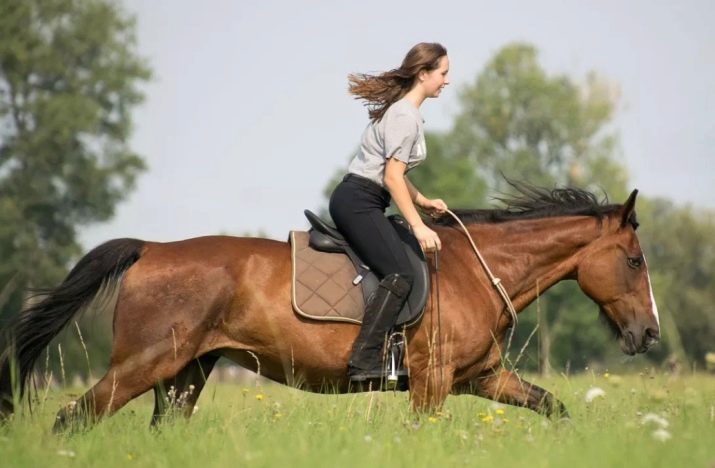
Features
The main feature of this gait lies in the fact that it has not only natural, but also artificially developed by people when working with horses varieties. Moreover, the latter are available only to high-class professionals; they are taught to master them for a long time and only in specialized schools.


In general, a gallop is a horse run that allows you to overcome even long distances as quickly as possible. This gait has several distinctive features. Consider them.
- Horses develop a top speed that can exceed 70 km / h. And this is the highest rate. In the remaining gait, these animals can accelerate to a maximum of 55 km / h.
- Galloping causes quite severe fatigue in animals. Therefore, only the strongest and most enduring horses can move for a long time with this gait.
- In some situations, if a gallop is used by a rider on a weak horse and for a long time, she may die or become seriously ill.
- Under natural conditions, horses use a gallop only in rare cases when their life is in danger.
- There is also the so-called gallop gait. Its meaning lies in the fact that the speed of the horse develops the maximum possible, one might say, critical for his health.
- Unlike other mobility options, this technique always has a moment when all the horse's limbs are in the air.
- A horse gallop, in contrast to the main gaits, conditionally consists of three phases. Phase One - the animal puts one hind leg on the ground. The second - one hind and one front limbs is supported at the same time. The third phase - the leg from the first phase rises into the air, and the second - the front - on the contrary, falls to the ground.
- If you listen carefully during the movement of the animal, you will hear a clatter of three hooves corresponding to a specific part of the movement.
- During the execution of this type of gait, the loads on the limbs of the steed are distributed absolutely unevenly.
A distinctive feature of this method of movement is the fact that the racer himself takes very long steps while running, sometimes they are 3 times longer than his own body.

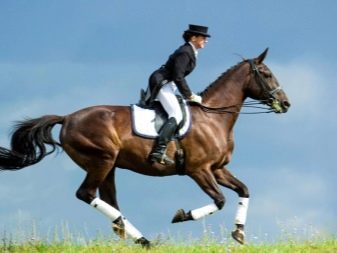
In addition, during the movement of the animal in the arena or paddock, it is the rider who sets the tone for the entire gait. That is, he shows the animal with which legs it is necessary to enter a gallop. In enclosed spaces, the horse’s speed at this pace ranges from 20 to 30 km / h, which is almost two times less than at horse races.
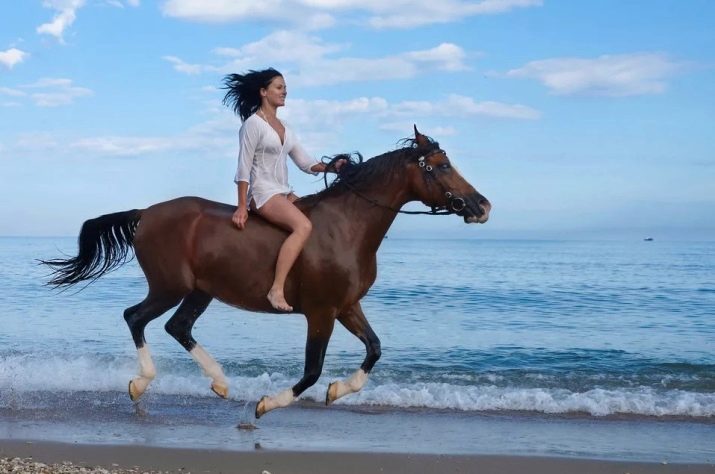
It’s difficult to learn the correct gallop technique not only for the rider, but also for the animal. Therefore, to ride such a gait while riding a horse is possible only for those who have studied its types and subtleties of performance.

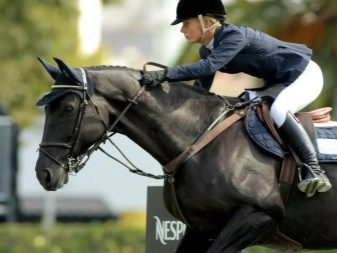
Kinds
Currently, riding masters distinguish several varieties of gallop, divided into two large groups.
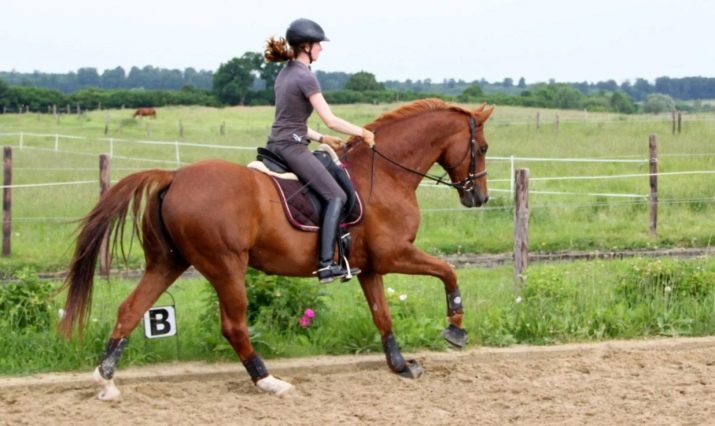
Depending on the leading leg
The main limb is the one on which the horse rests at the end of the second phase, that is, immediately before entering into an indisputable movement.
- Right gallop - this is when the leading limb is right. This type of movement is the most optimal in the arena or paddock, as well as when moving in a circle, when the steed needs to be turned regularly to the right side.
- Left gallop - this is when the leading leg is left. Optimal for horse racing and turns to the left.
You need to know that if during the movement with this gait the horse has to turn in the direction opposite to the leading leg (for example, the gallop is right-handed, and turns to the left), then this technique of movement is called a counter-gallop.
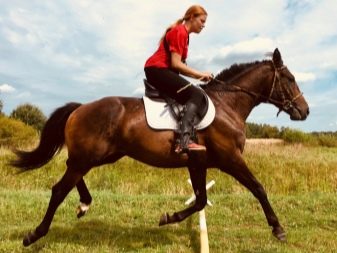

Speed
Many believe that on this basis the gallop is divided into 3 groups, although in fact there are five of them.
- Gallop worker. The natural movement of the horse when the speed of the animal does not exceed 10-15 km / h, and the stride length does not exceed the length of the body. This type of movement is most often chosen by those who prefer racing with overcoming barriers.
- Frisky (accelerated) gait. It is characterized by the speed of the animal up to 20 km / h. The step length is slightly longer than usual. This type of ride is usually used at field events and walking, as well as during competitions.
- Manege (collected) gait. The animal moves slowly, but collected. The main load with this type of riding falls on the pelvic limbs. This gait allows you to quickly and efficiently change the type of ride. It is especially popular at competitive events.
- Field gait (canter). The key way to move an animal. It is considered the best option for checking the endurance of a horse. Its peculiarity is that the speed of the animal is about 30 km / h. This allows you to move quite quickly over long distances and without severe fatigue of the horse.
- Frisky gallop (quarry). The most difficult and tedious type of running for a horse. The speed of the animal and its strength are at its limit, while the horse can cover a distance of 20 meters in one second. The step width can reach four horse body lengths. Used in exceptional situations and only at short distances.
All of the above types of gait are natural, that is, they are laid by nature. Therefore, special training of horses is not required. However, there are artificially created types of gallop, which are more complex and time-consuming to perform. However, it is they who are most often demonstrated at top-class competitions.

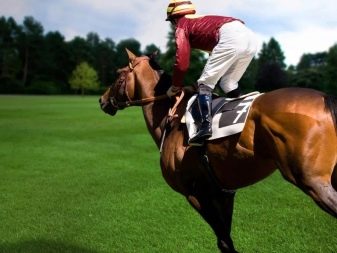
Artificial gallops
Only a high-class specialist should teach an animal such gait. Training is long, intense, constantly must be supported by practical races. It is best to train a horse in these types of gallop only when she has mastered the technique of performing all other types of gait.
- Gallop back. It is considered aerobatics. Even today, not all masters and not in every school teach this type of riding. If we talk about the technique of this gait, then it is the exact opposite of the classic gait of this kind. This version of the gallop is usually used only in circus and demonstration performances. The peculiarity of such a gait is that not everyone, even the most trained and experienced, a steed can master it.
- Gallop on three legs. It has the most complex execution technique. It is used only in competitions of the highest category. As the name implies, during riding, movement is carried out only on the three limbs of the animal. In this case, the fourth leg (one of the front) during the movement of the earth does not touch at all. It should be in a strictly extended position and at a certain height. Like the previous type of artificial gallop, not every animal can master this species.
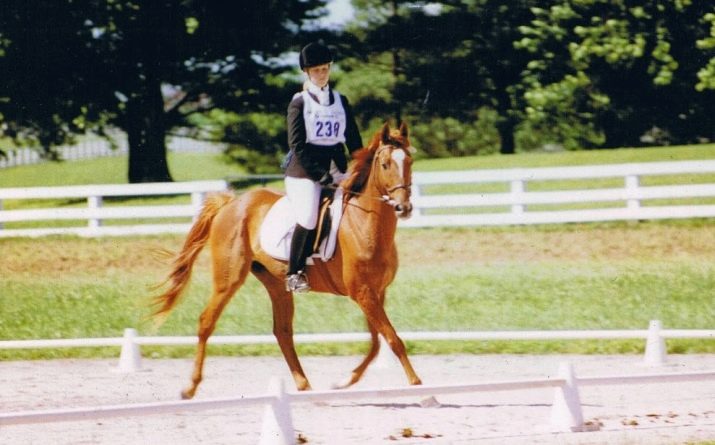
Artificial types of gallop are difficult to perform for both the horse and its rider. Therefore, it is very important that the rider be experienced and feel good about his horse. Otherwise, movement with artificial gait can lead to serious injuries to both the horse and the rider.
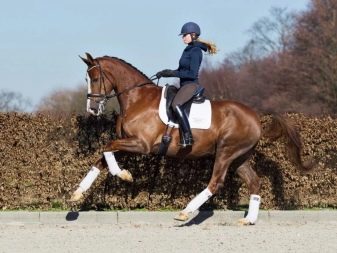
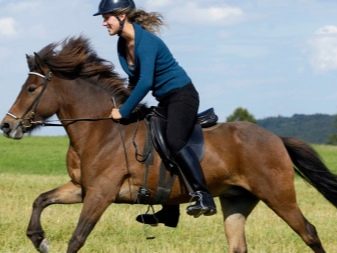
Riding rules
There is a theory that states that it’s easiest to gallop. In part, it is true, but only on condition that the rider is sitting in the saddle steadily, and the animal itself has already worked out the technique of such a ride.
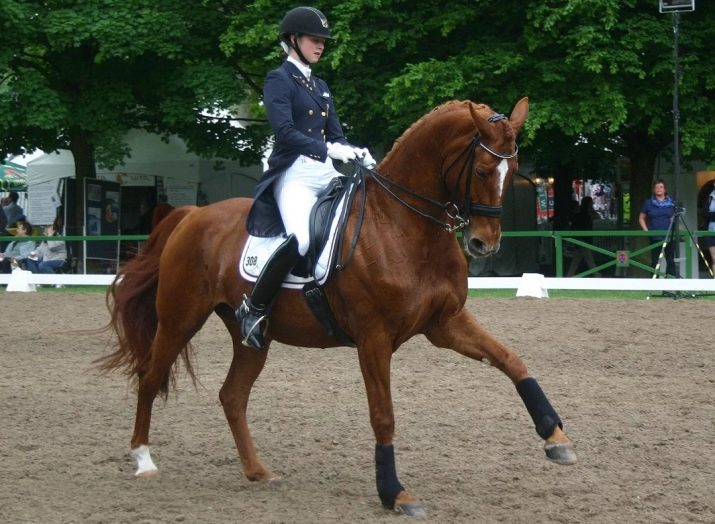
There are three basic rules for galloping on a horse. They are the three main conditions for learning how to put a horse into this gait.
- The right horse. This factor is the key. The animal should have a soft step and a comfortable fit. It should not only feel good about its rider, but also be able to carry out quickly his commands. It is important here that the horse can carry itself and easily go uphill, and for this he needs stable limbs, especially the hind legs. Consolidation and balance are the main conditions for the landing of the animal to be successful and safe.
- A complete set of correctly selected ammunition. Without this, raising the animal to a gallop with the correct execution of the technique will be impossible. Therefore, it is necessary to ensure that the neck strap, bridle, cord, gog and saddle are included in this ammunition.
- The right place for training. When the animal rides in an uncomfortable training place, the gait technique is disrupted. Therefore, it is necessary to choose closed areas, with a large area and without sources of extraneous noise.
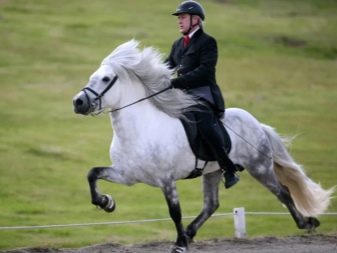
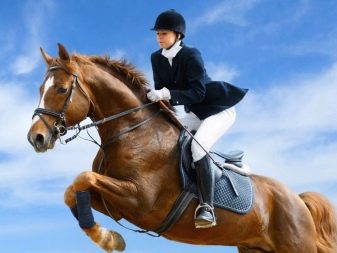
It is also necessary to observe the basic rules for transferring a horse from one gait to another. After all, the only way to send a lynx to a gallop and vice versa. The fact is that it is an accelerated step (lynx) that is a variant of movement preceding a gallop.
- Before raising a horse to a gallop, it is necessary to be convinced of its readiness. If the animal walks briskly and evenly - it is ready for this, and if it is sluggish and relaxed, then the time for transfer to a gallop has not yet come.
- The rider sits deep in the saddle and with effort pulls the left schenkel in front and up on the girth, and with the opposite hand on the back.
- The occasion is pulled with the right hand, but at the same time on the left side, it is slightly weakened.
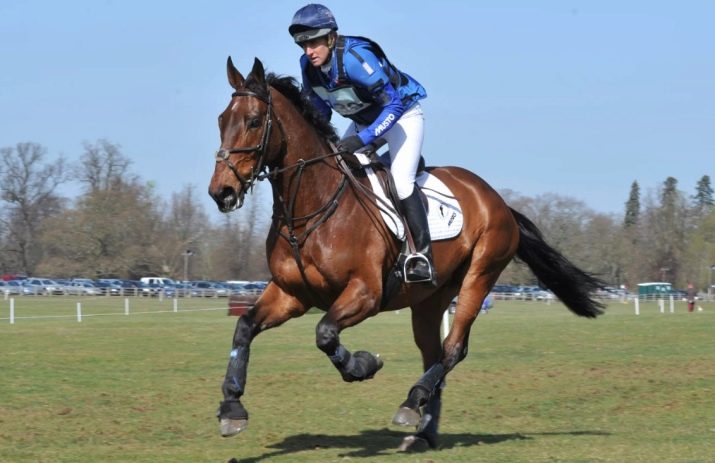
This procedure is carried out when transferring the animal to the left-side gallop. For a right-handed gait, all movements are performed with opposite hands and in other directions.
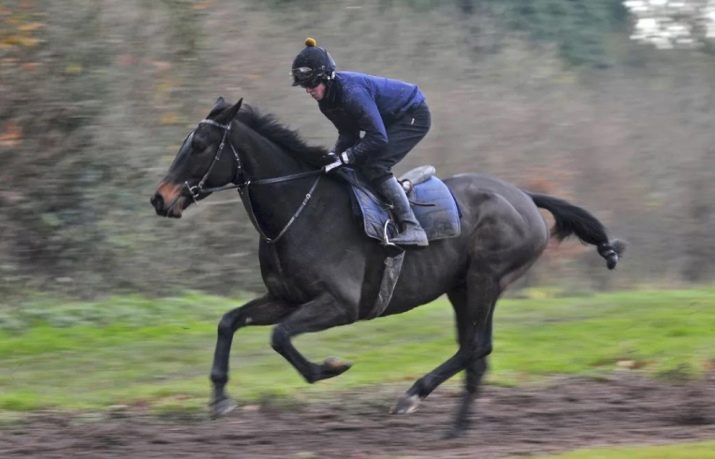
If the animal will walk correctly, then all that is required of the rider is to maintain the schenkel in a predetermined position.
To return the animal back to the allure-lynx, the rider just needs to pull the reins and cover the sides of the animal with the shenkels on both sides.

If the horse is inexperienced or was not ready to go, then instead of raising to a gallop, she could go into a fast trot. In this case, it is transferred to the classic gait of this kind, and after a couple of laps in the corral they repeat the attempt to raise to a gallop.
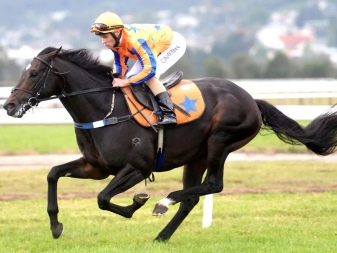

Such a way of riding as a gallop is really simple and convenient for the animal and the rider, but only on condition that they are both ready for such a ride and have enough knowledge and practical experience.
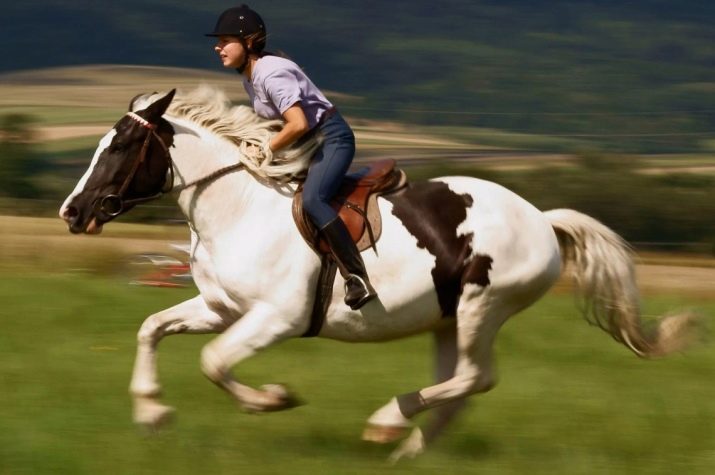
Everything about the gallop can be seen in the next video.
